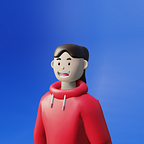With pandemic, all digital platforms seemly have begun to also invest in Virtual Reality (VR). You can see the trend when Facebook started to invest in Horizon, a VR platform similar to an already well-established competitor, VR Chat. Noted, Horizon is a “Disney version” because it has restrictions in creative expression, it does indicate that VR is becoming more mainstream than before.
Interacting with others in VR is one ingenious way to express whoever you are without it ever reflecting your physical appearance and under anonymity. VR has an opportunity to create a world where racial discrimination is limited while allowing different forms of expression in the Metaverse.
The Metaverse is a virtual-reality space in which users can interact with a computer-generated environment and other users.
Every user has an “Avatar” that allows creativity and diversity in the virtual space. Just like what we have already seen from Ready Player One, they can be an anime character, a stick figure, or even just a rock. With the development of 5G, VR may have potential (more than we thought initially) with many usages and integrations.
VR Practicality
Currently, VR platforms are used in exposure therapy where the clients can safely confront their fear in the Metaverse. VR is also used in combat and sport training to simulate environmental practices. For many suffering from a social anxiety disorder, and communication disorder, it can be a safe way to practice communication, and express their identity more confidently.
Immersive VR education is resourceful, especially with school opening and closing due to the pandemic. VR education also provides a new medium for dyslexic students or students who have difficulty concentrating in class.
VR in Entertainment
In entertainment, you can play VR games, watch a movie as if you are in an actual movie theatre, search on Google, watch Netflix, and experience YouTube 360 degree videos for immersions.
One thing to note is that it can also provide an immersive first-person perspective viewpoint of being present in the historical film, perspective film and documentaries. VR is a new medium for those who love immersive stories or wish to know more about societal impacts of homelessness, racisms, and more without diving into a book.
I would also recommend keeping an eye out for a non-fungible token (NFT).
NFT is data stored through blockchain that allows for the asset to be unique and not interchangeable.
That means there is only one unique data asset that exists in the entire world. Recently, NFT has played a role in the art industry when Metakovan, an investor, has bought a collection of digital artwork “Everydays: The First 5000 Days” by the American artist Beeple at Christie’s for 69 million USD. The investor’s reason is to have it available in a gallery complex within VR or on a website.
VR in Workplace
For workplaces, VR allows users to present and share ideas in a virtual office space. In the future, there is an incentive to have an avatar come to work within the Metaverse and perform the same duty from home instead of coming to work physically. For instance, a user in Metaverse can relay information to a physical world robot to interact with physical objects in the factories. Feels like this is too far in the future? Maybe, maybe not.
With the pandemic and lack of property in dense cities, the virtual workspace can be the future. Remote working has the benefit to cut down on carbon usage and land development despite the lack of face-to-face contact.
Theoretically, the hiring company would not need information about real name, skin colour, background and age for that specific job, as long as you have the skillset and can do the job well. If they have done their job well upon hiring, it should show on a board, similar to how the game high-score function works. Those who have done the job well should have progressed or gained more points than those that have not. Additionally, transparency from the data gathered would be self-evident and public.
VR with Future Impact in Social Justice and its critics
Why is this appealing in the name of social justice? As mentioned, it offers different method for practicality, it provides the first-person experience about societal problems, and it addresses interview screening (including AI screening) processes that are biased.
However, VR is not without its shortcomings. VR is not for people who are susceptible to motion sickness. Additionally, having access to VR requires high-speed internet, purchasing a device, and a proper space to use them. Moreover, the gadgets are still bulky, heavy to wear. It’s not exactly made for long-hour usage with low battery life (although that may have been a design intention to allow users to not invest long hours in the Metaverse).
But, no matter how much people want to deny it, the future is already here. Thanks to the pandemic, everything must be online or digitalized. We already know what happened to companies that are unable to change with passing time.
UX/UI in Creating the Metaverse
My recommendation to those who wants to get involved in upcoming creation of the Metaverse? Better start thinking 3D.
For those in UX/UI industry, it will become an opportunity to get involved in creating a world for the users and address the social issues at the same time. With a design impact that influences users directly, UX/UI designers will need to be aware that even a small change in the design will affect how the Metaverse will grow and expand. After all, the design of the Metaverse will also determine what type of community will thrive.
